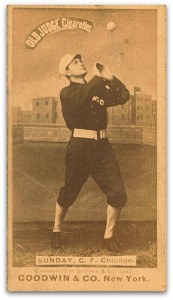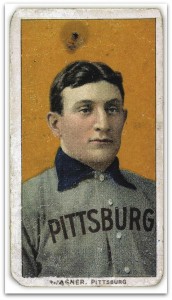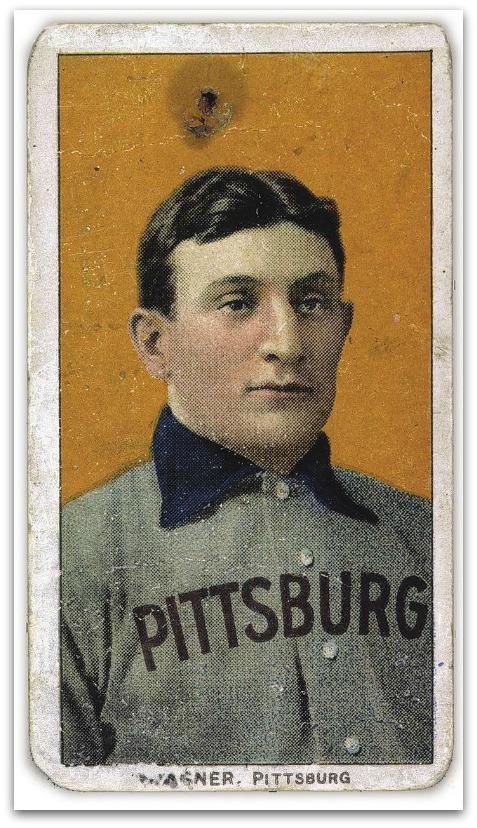People in the U.S. have been collecting baseball cards for more than 100 years. Bubblegum hadn’t even been invented yet when Old Judge cigarettes gave birth to this American institution. This article was first publish in Uncle John’s Sport Spectacular Bathroom Reader.
BACKGROUND
 Baseball cards have grown from a kid’s hobby to a $2 billion a-year industry. Their history goes back to the early days of baseball.
Baseball cards have grown from a kid’s hobby to a $2 billion a-year industry. Their history goes back to the early days of baseball.
The Duke of Tobacco. Until the 1880s, when “Buck” Duke took over the Duke Tobacco Company (later The American Tobacco Co.) from his father, most tobacco was sold loose, in tins; people would roll their own cigarettes. In 1885 Buck bought the rights to a machine that put out 200 ready-made cigarettes at a time. Now he was able to concentrate on selling cigarettes instead of tobacco.
What he needed was more customers. So he began a huge ad campaign. Soon Duke had 40% of the cigarette market.
To cut costs, Duke replaced tobacco tins with paper cigarette packs. As Pete Williams recounts in Card Sharks: When he discovered that many of the packs were crushed in shipping, Duke came up with the idea of placing a cardboard insert to stiffen the pack. Not only would they prevent damage, but the “cards” would serve as advertising pieces and premiums to boost sales…He included cards of actors and actresses…[and] his idea inspired competitors to place baseball cards in their products. The first cards were sold with Old Judge Cigarettes in 1886.
They were 1.5″ x 2.5″—much smaller than today—and pictured stoic-looking players wearing neckties with their uniforms. Eventually they started using “action” shots, which were actually staged photographs of players reaching for, or swinging at, balls on a string. Instead of the statistics and trivia found on the back of today’s cards, these early cards had advertising.
WHY BASEBALL?
Baseball cards had three advantages for tobacco companies: 1) They capitalized on the growing popularity of the sport, which was just coming into its own; 2) The connection with sports heroes helped combat the notion that store-bought cigarettes were effeminate; and 3) They were collectible. Pete Williams notes: With the cards came card collecting, which presented a challenge since the cards came one to a pack. Collecting became something of a family affair, as young boys would obtain the cards from their fathers and urge them to buy more tobacco products. Non-tobacco users who wished to collect had to pick up the tobacco habit—as the companies hoped—or find a user willing to part with the cards.
THE PRECIOUS SET
 Duke Tobacco got out of the baseball card business in 1890, when it combined with other tobacco companies to form American Tobacco. With a virtual monopoly on cigarettes, there was no need for promotions.
Duke Tobacco got out of the baseball card business in 1890, when it combined with other tobacco companies to form American Tobacco. With a virtual monopoly on cigarettes, there was no need for promotions.
But from 1909 to 1911, anti-trust laws were used to break American Tobacco up, so the company went back to using baseball cards as a promotion. They came out with a 524-card set called the “T206”—which has turned into the most valuable baseball card series in history. According to Card Sharks, here’s why: Shortly after production began, shortstop Honus Wagner of the Pittsburgh Pirates (now a Hall of Famer) objected to the use of his photo and threatened legal action if his card was not removed from the set. American Tobacco complied, but not before a quantity of Wagners had been printed and shipped with tobacco.
For a long time, baseball historians believed Wagner objected because he disapproved of cigarette-smoking. Then they found out he’d once endorsed a brand of cigars…and realized he just didn’t want them using his likeness without paying for it.
Today, the few Wagner cards that slipped out have become the Holy Grail of baseball card collecting. In 2007 one was sold at auction for $2.3 million!
Want more sports trivia? For part II of the baseball card story, see page 457 of Uncle John’s Sports Spectacular Bathroom Reader.








